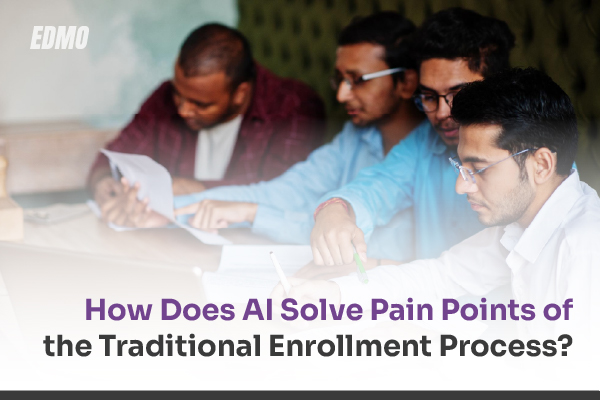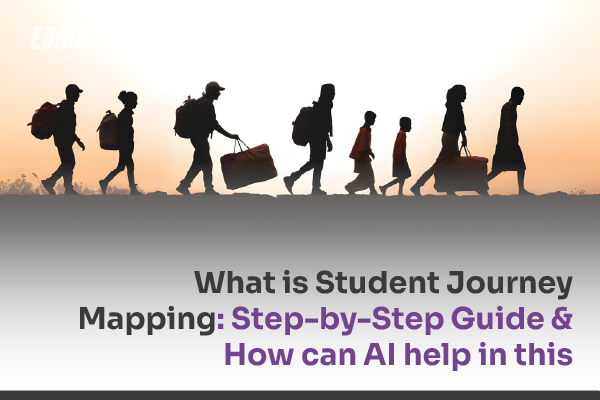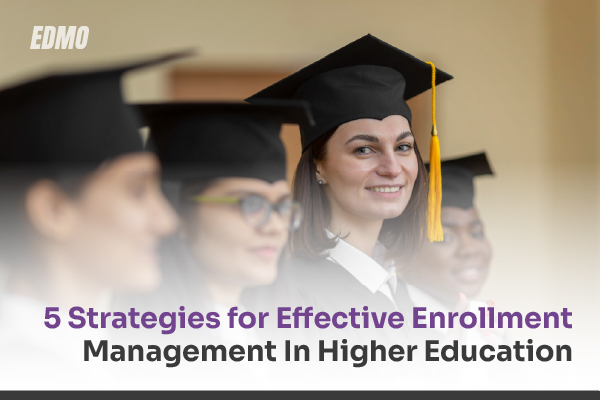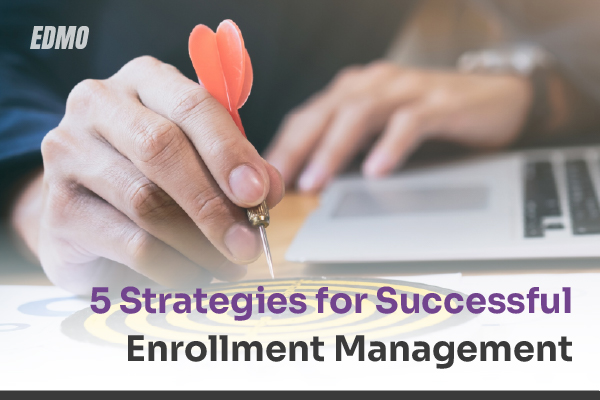The traditional admissions funnel is having trouble in the changing world of higher education. The U.S. undergraduate enrollment rate fell by about 15% from 2010 to 2021, with 42% of that fall occurring during the pandemic.
With estimates showing a 5% decline in freshman enrollment for the fall semester, this trend is predicted to continue. However, this difficulty might also present unanticipated benefits, particularly in international education.
Colleges and universities can reach a wider audience by using digital technologies to recruit overseas students and tap into new markets. The marketing and admissions departments must collaborate to overcome these obstacles. Institutions can quickly turn interest into enrollment when these initiatives align with a unified, data-driven admissions strategy.
Enrollment funnels, however, were straightforward in the past: attract, engage, and enroll.
However, today’s students’ path is far more complex, influenced by numerous digital touchpoints and personalised exchanges.
If institutions hope to succeed, they must rethink enrollment funnel optimisation and embrace a cutting-edge strategy based on data insights, artificial intelligence tools, and departmental cooperation.
What is an Admission Funnel?
An admission funnel is a methodical procedure educational establishments use to attract, interact with, and accept students. It assists institutions in following potential students from their first awareness to their final enrollment, similar to a marketing or sales funnel.
Each stage of the admission funnel directs potential students in the following ways:
Awareness:
This is the initial phase through which prospective students learn about your institution. Colleges must develop customized marketing strategies using student demographics and behavioural data to attract the best applicants. Personalized messaging in outreach initiatives, social media advertisements, and search engine marketing can all help spark interest and provide a good first impression.
Consideration:
Students actively compare several colleges to choose the one that best suits their needs. Colleges should use individualized communication tools like webinars, virtual campus tours, and emails to successfully engage people. These initiatives help resolve student issues, provide information, and foster institutional trust.
Decision:
Here, Students make their final decisions and are ready to commit. Admission teams must assist them in making decisions by resolving any potential roadblocks, such as issues with financial aid or application process challenges. Helping motivated students become applicants can be achieved through proactive assistance.
Matriculation:
This is the last stage before accepted students become enrolled. To feel supported and accepted, students must have a seamless onboarding process. To help students settle in, colleges should stay in constant contact, conduct follow-ups, and supply the required materials.
Rethinking Enrollment: How AI can Revolutionize the Outdated Admission Funnel?
The traditional admission funnel is becoming inefficacious due to shifts in student behaviour, technological advancements, and changing expectations.
Non-Linear Decision-Making
Today’s students interact with various touchpoints and frequently return to earlier stages of their decision-making process. The COVID-19 pandemic has significantly changed application behaviours, leading many students to apply to a broader range of institutions and to use diverse online resources to guide their choices.
Increased Digital Engagement
Today’s students expect personalized, on-demand information and interact with institutions through multiple digital channels. A survey by EAB indicates that 63% of students prefer virtual interactions during their college search process, emphasising the need for a strong digital presence.

Source: EAB Report
Longer and More Complex Enrollment Cycles
The enrollment process has become longer and more complex. Data from the College Board’s Admissions Research Consortium indicates that the pandemic caused application submissions and decision delays, contributing to extended enrollment cycles. Let’s take a closer look at the enrollment funnel of ARC colleges from 2018-21.

Source: ARC Research on College Applications, Admissions, and Enrollments
Shift from One-Way to Two-Way Communication
Prospective students and educational institutions increasingly expect interactive and personalized communication. A report by Niche highlights that institutions are adopting two-way communication strategies, such as customized email campaigns and engaging social media interactions, to meet these expectations.
Rise of Data-Driven Decision Making
Institutions are utilizing data analytics to enhance their recruitment and enrollment strategies. According to EdTech Magazine, colleges are adopting sophisticated data analytics tools to gain insights into student behaviors and preferences, enabling more targeted and effective recruitment efforts.
AI’s Integration in the Enrollment Funnel
Institutions are using AI to streamline application reviews, with adoption rising from 50% in 2023 to a projected 80% by 2024. As AI reshapes enrollment, colleges must adapt while addressing its challenges and ethics.
Streamlining Application Reviews
AI systems can effectively process and evaluate large volumes of applications, which helps reduce the workload for admissions officers. A survey by Intelligent.com found that in 2023, 50% of higher education admissions offices were using AI, which is expected to rise to 80% by 2024. This increase reflects the growing dependence on AI to manage application assessments.
As per the survey, 87% of respondents ( whose institutions use AI) affirm that AI ‘sometimes’ (43%) or ‘always’ (44%) makes the final call on the subject of applicant admissions. Similarly, among respondents (whose universities are currently mulling over using AI in admissions, 74% clearly stated that AI is ‘somewhat’ (45%) or ‘very likely’ (29%) to decide whether to enroll a student in the institution or not.

Source: Intelligent.com Data
Similarly, EDMO’s Document Intelligence automates student application sorting, analysis, and evaluation, reducing manual workload and improving accuracy. By seamlessly integrating with major CRMs, EDMO ensures quicker and more efficient admissions processing.
Personalized Student Engagement
AI-powered chatbots and virtual assistants offer prospective students immediate and personalized responses to their questions, which improves engagement and satisfaction. Similarly, EDMO’s Conversation Intelligence revolutionizes student interactions through AI-powered chatbots and voice assistants. These tools offer real-time, personalized support across multiple channels, from admissions inquiries to financial aid guidance. A report by Ellucian reveals that 84% of higher education professionals use AI tools in their professional or personal lives, highlighting the widespread adoption of AI for activities like student interaction.
Predictive Analytics for Enrollment Management
Artificial intelligence (AI) allows educational institutions to analyze large volumes of data to predict enrollment trends and student behaviors. The global market for AI in education was valued at $3.99 billion in 2023 and is projected to reach $5.57 billion by 2024, reflecting a compound annual growth rate (CAGR) of 39.7%. This growth highlights the increasing investment in AI tools that support strategic enrollment planning.
Enhancing Decision-Making Processes
AI supports admissions committees by offering data-driven insights, which help them make more informed decisions. However, it’s essential to recognize that 87% of survey respondents from institutions currently using AI reported that it is “sometimes” or “always” used to make final application decisions. This underscores the necessity for careful implementation to prevent over-reliance on AI systems.
Addressing Ethical Considerations
As AI becomes increasingly common in admissions processes, addressing ethical considerations such as bias and transparency is crucial. In a blog post by Alberto Acereda, the importance of ensuring that AI models do not inadvertently favor applicants from privileged backgrounds is highlighted. The post emphasizes the need for ongoing evaluation and ethical oversight of these AI systems.
Conclusion
The traditional admissions funnel is becoming outdated because of shifts in student behavior and advancements in digital technology. Artificial Intelligence (AI) can enhance recruitment by providing personalized engagement, predictive analytics, and streamlined application reviews. To improve enrollment, institutions must adopt data-driven strategies, foster interactive communication, and ensure the ethical use of AI. Moreover, digital tools can broaden international outreach, optimizing the admissions process for the complex and non-linear decision-making that today’s students experience. At EDMO, we streamline the enrollment and admissions process. Picture responding to inquiries in under a minute and reducing the application timeframe from several weeks to just a few hours. Our tools lower staff workload by 40% and boost the application-to-enrollment rate by five percentage points.
Also Read:
The ROI of Enrollment Innovation: Why Technology Investments Pay Off
The Growing Importance of Micro-credentials in Higher Education
Optimizing student transfers for higher education admissions
Do Chatbots Work in Higher Ed?







